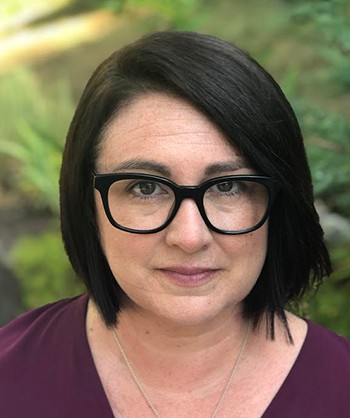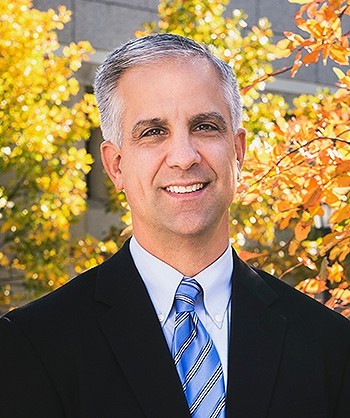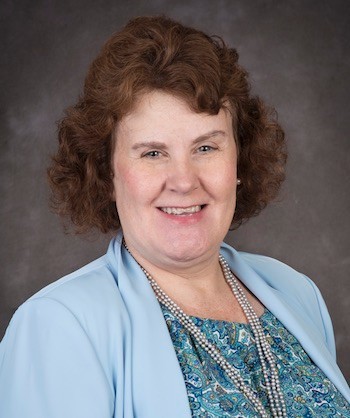
Graphic courtesy of BC News
A few years ago, the Boston College School of Social Work launched the Trauma Integration Initiative, a holistic program that prepares students to help clients cope with trauma while guarding themselves against its effects.
The need for such a program is acute: According to studies, 85 percent of social workers routinely treat clients with a traumatic condition, while one in seven social workers develop post-traumatic stress disorders.
We asked TII co-chairs Kathleen Flinton, Scott Easton and Susan Coleman to explain the physiology of trauma, how BCSSW is preparing students to become trauma-responsive clinicians, and where newly-minted social workers who specialize in trauma typically go on to work after they graduate.

Kathleen Flinton
First of all, what is trauma and how can it affect people?
Trauma is a very broad term that has gained a lot of usage both within and outside of clinical settings. At its essence, trauma is an experience that overwhelms an individual’s resources to respond in the moment, and carries with it a threat to safety, either physical or psychological. As we understand trauma more deeply, we can see how this threat can happen in many ways, to an individual or a community. The harm can also come from many sources, from another person, perhaps a caregiver, or from the structures of our society and the institutions within which we function. This broadened definition of trauma is something that the TII has embraced in our courses and in our work around student formation and creating trauma responsive systems within our school.
Given this expanded definition, we can then see the impact of trauma in many ways. For some, it can look like the classic symptoms of post-traumatic stress disorder that we see in the Diagnostic and Statistical Manual of Mental Disorders, for others it might be the strategies that they have developed in order to survive in the face of ongoing threat. Whichever way it presents, we know the impact happens at many levels—it can be in how they understand themselves and the world, their relationships with others, or their ability to be part of a community. We take a holistic approach to understanding the person, how they have been impacted and adapted, and view our work as supporting the person, or community, in their inherent adaptations and responses to attain, or restore, a sense of wholeness.
What role can social workers play in helping people manage the impact of trauma?
Social workers are optimally positioned for trauma work as we train in an ecological perspective that sees the person in context. We are also trained to always be looking from the micro to the macro regardless of which level of intervention our practice takes us. As such, we approach trauma with all of these lenses in place and are able to work with people beyond just managing their symptoms of traumatic stress. Our clinical training teaches us to do that piece, but we also do more through our ecological approach.

Scott Easton
How has BCSSW woven the Trauma Integration Initiative into coursework?
The Health and Mental Health fields of practice are fully trauma-informed, as the required second-year, advanced practice course focuses on trauma for students in both clinical and macro specializations.
Furthermore, clinical students within any field of practice can earn a certificate in trauma by taking a series of specific courses, among them “Adult Psychological Trauma,” “Child and Adolescent Trauma: Clinical Assessment and Treatment,” and “Advanced Trauma Theory and Treatment Modalities.”
What are three things that students who take these courses will learn about treating clients who have experienced trauma?
Seeing the person within their context, understanding that people develop adaptations in order to survive that make sense within their context, and understanding that trauma is political—it is seen, named, and responded to within political contexts that need to be acknowledged and understood.
How has BCSSW woven the Trauma Integration Initiative into field education, student formation, and research?
In field education, we have developed a model of Trauma Responsive Advising through which we brought the foundations of trauma-informed practice to our advising team. This supports advisors in their connections with students, as they navigate their reactions to the learning experiences in the practica, layered on top of their own lived experiences.
With respect to student formation, we have monthly Learning Communities during which students and faculty come together to talk about management of vicarious trauma and self care practices. It’s an informal space to learn a new skill each month and talk about how that skill looks for each of us. This encourages students to build a foundation of self-care practices that can sustain them as they move into their professional world.
In terms of research, many faculty members at BCSSW have active programs of research that intersect or center on trauma, its prevalence, effects, and treatment interventions. For example, the TII team recently published the first scoping review of trauma-informed care in field education departments of schools of social work in the U.S. Other scholarship at BCSSW focuses on race-based violence, child sexual abuse, migration trauma, and more. Combined with the TII innovations around curriculum, student formation/advising, and field education, this research helps position BCSSW as a national thought leader among schools of social work around trauma.

Susan Coleman
MSW students at BCSSW gain real-world experience through field practicums with organizations that complement their goals and interests. Where do students who specialize in trauma typically work?
In so many of our settings, whether it is community health centers, public schools, skilled nursing facilities, or substance use treatment programs, our students are likely to encounter folks who have or are experiencing trauma. These traumas could be intrafamilial, interpersonal, or community-based. Through this initiative, we are educating our students that, sadly, trauma is found in the lives of so many of the individuals, families, and communities we serve. It is incumbent upon us to prepare our students to be present and attentive, to act as if anyone they encounter may have a trauma experience, and to engage with empathy and compassion.
How about graduates—what kinds of jobs do they land after they earn their degree?
Our graduates are working with trauma in a broad array of settings. Some are working in trauma programs specifically and others are out working in schools, community health centers, and hospitals. The goal of our education within the TII is to train clinicians to provide high quality, evidence-informed trauma work in real world settings where people are presenting. We believe someone shouldn’t have to go to a specialized program to get great trauma care—it should be accessible to the settings in which people are already engaged. Given the high prevalence of trauma, it’s difficult to find a setting where people with trauma exposure are not part of the population served.


